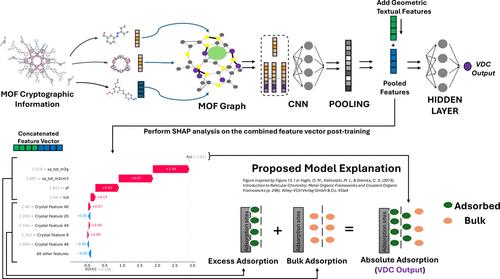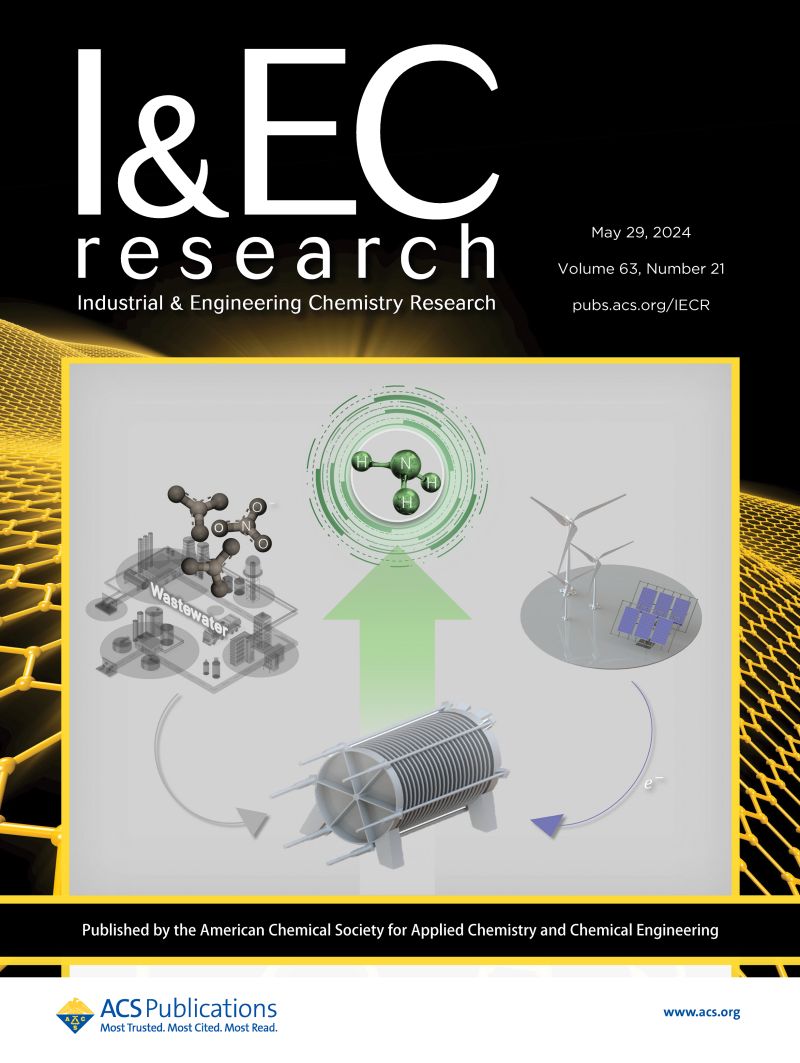Incorporating Mechanistic Insights into Structure–Property Modeling of Metal–Organic Frameworks for H2 and CH4 Adsorption: A CGCNN Approach
IF 3.8
3区 工程技术
Q2 ENGINEERING, CHEMICAL
引用次数: 0
Abstract
In this paper, we introduce a novel approach for understanding gas adsorption mechanisms in Metal–Organic Frameworks (MOFs) by combining a tailored Crystal Graph Convolutional Neural Network (AG-CGCNN) with game theory through Shapley Additive Explanations (SHAP). Our technique identifies the root causes of suboptimal performance in crystal structures through the analysis of softmax probabilities of performance outcomes, alongside the marginal contributions of crystalline and geometric features to these outcomes. Specifically, our approach discerns whether poor performance stems from inefficient atom–atom interactions indicating suboptimal gas molecule capture or from the subpar distribution of geometric characteristics, including surface area, pore limiting diameter (PLD), or largest cavity diameter (LCD). Additionally, the modeling framework adopted in this study clearly captures how intrinsic atomic features facilitate excess adsorption while volumetric spatial characteristics account for bulk absorption in complex porous MOF networks. Furthermore, we have introduced an innovative technique to quantitatively evaluate the amount of both excess gas absorbed within site interactions and bulk gas within the void spaces in a single MOF unit cell using a modified CGCNN regression model and SHAP. Additionally, we highlight the excellent performance of three 100 K-trained AG-CGCNN and demonstrate how its architecture can be used to determine the efficiency of a MOF gas capture system.

在本文中,我们通过 Shapley Additive Explanations (SHAP) 将定制晶体图卷积神经网络 (AG-CGCNN) 与博弈论相结合,介绍了一种理解金属有机框架 (MOF) 气体吸附机制的新方法。我们的技术通过分析性能结果的软最大概率以及晶体和几何特征对这些结果的边际贡献,找出晶体结构性能不理想的根本原因。具体来说,我们的方法能辨别出性能不佳是源于原子-原子相互作用效率低下,导致气体分子捕获效果不佳,还是源于几何特征分布不佳,包括表面积、孔极限直径 (PLD) 或最大空腔直径 (LCD)。此外,本研究采用的建模框架清楚地捕捉到了内在原子特征如何促进过量吸附,而体积空间特征又如何解释复杂多孔 MOF 网络中的大量吸附。此外,我们还引入了一种创新技术,利用改进的 CGCNN 回归模型和 SHAP 定量评估了单个 MOF 单元晶胞中位点相互作用内的过量气体吸收量和空隙内的大量气体吸收量。此外,我们还强调了三个 100 K 训练的 AG-CGCNN 的卓越性能,并展示了如何利用其结构来确定 MOF 气体捕获系统的效率。
本文章由计算机程序翻译,如有差异,请以英文原文为准。
求助全文
约1分钟内获得全文
求助全文
来源期刊

Industrial & Engineering Chemistry Research
工程技术-工程:化工
CiteScore
7.40
自引率
7.10%
发文量
1467
审稿时长
2.8 months
期刊介绍:
ndustrial & Engineering Chemistry, with variations in title and format, has been published since 1909 by the American Chemical Society. Industrial & Engineering Chemistry Research is a weekly publication that reports industrial and academic research in the broad fields of applied chemistry and chemical engineering with special focus on fundamentals, processes, and products.
 求助内容:
求助内容: 应助结果提醒方式:
应助结果提醒方式:


